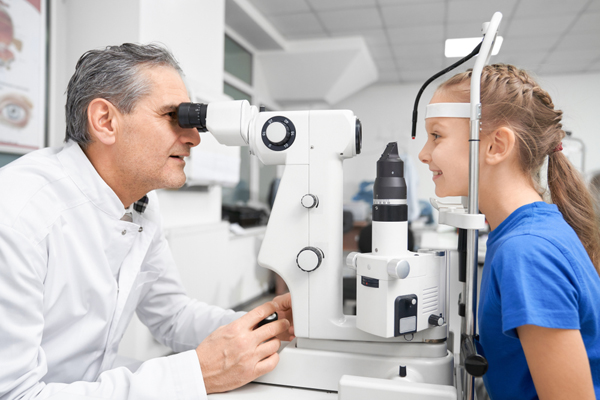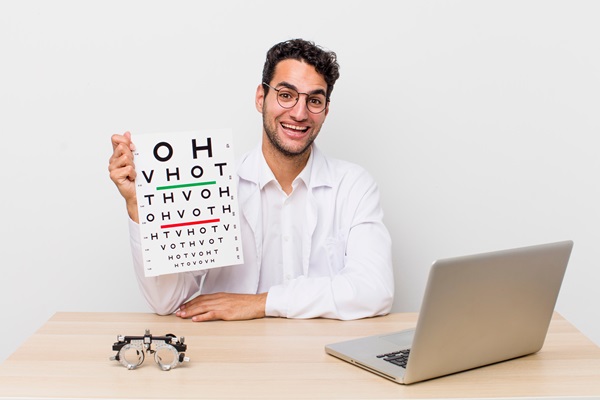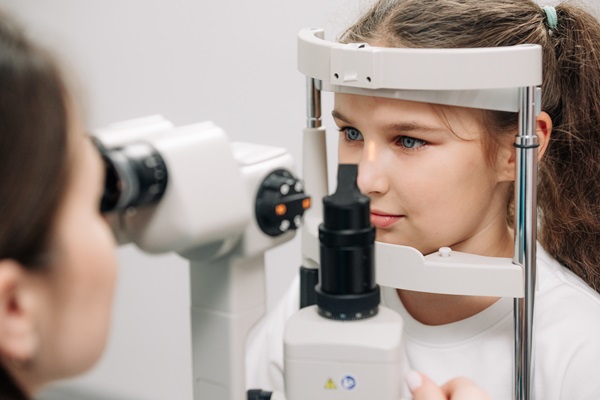What to Expect During an Eye Exam

An eye exam is a relatively uneventful assessment that typically involves an optometrist using tools and tests to evaluate different aspects of a person's vision or eye health. If you live with blurry vision or if you experience signs of bad vision such as headaches and fatigue, it may be time to go in for an eye exam. The goal of eye exams is to detect eye problems at the earliest stages when they are most treatable. Regular eye exams can give individuals a chance to either correct or adapt to vision changes and to ensure any issues do not worsen.
The three parts of an eye exam
Like any medical procedure or assessment, an eye exam can be broken into three parts: before, during, and after. If a person currently wears contact lenses or glasses, the eye doctor will want to see the prescription to ensure it is still accurate. It is important to note that oftentimes, an optometrist needs to dilate a person's pupils to perform a thorough exam. If this is the case, the patient will need dark sunglasses to wear after the eye exam and possibly someone to drive them home.
Before the exam begins
For the first visit to an eye doctor, a person should expect to undergo a verbal evaluation. The eye doctor must understand a person's medical history as well as the risk for eye disease and vision problems. To gain this understanding, the optometrist or an assistant asks a variety of questions.
Questions can identify whether a person currently experiences vision problems or has in the past and whether the person wears contacts now. The optometrist may also ask about recent health issues, premature birth, and whether the patient is on any prescription medications. The patient may be asked to provide information regarding allergies, prior surgeries and familial health, and eye health history.
During the eye exam
Eye exams are noninvasive and usually painless procedures. Exams typically involve specific steps:
- Pre-exam tests: A technician may run a few simple tests on the patient before meeting the doctor to evaluate how well their eyes function together. These tests may include color sensitivity, peripheral vision, and glaucoma or the "air puff" test. The technician may also use an autorefractor to estimate vision requirements, which automatically measures vision prescription
- Pupillary reactions: The eye doctor will measure the pupils’ responsiveness with a light. The pupils' reaction to light is an essential eye function that makes vision possible. Additionally, the doctor will examine the eye's surface for dry eye, corneal scratches, and bacterial debris
- Slit-lamp examination: For the slit light test, also known as a biomicroscope, the doctor uses a vertical bar of light to magnify the cornea, iris, and lens of the eye, searching for abnormalities. The doctor may ask the patient to blink or focus to carefully examine the eye surface
- Refraction and visual acuity: Most people are familiar with the visual acuity test when it comes to eye exams. The doctor will ask the patient to read an eye chart, which contains numbers and letters, with one or both eyes. Reading and recognizing numbers and letters clearly helps the doctor determine the patient’s vision prescription requirements. To ascertain the specific prescription, the doctor will use a big lens refractor and ask questions regarding which lenses improve or deteriorate the patient’s vision
- Dilation of the pupils: The doctor may ask patients whether they would like to have their eyes dilated at the end of the eye exam. It is easier to examine the retina and optic nerve clearly after dilating the pupils. The eye drops that the doctor will apply will cause the pupils to widen and provide them a better view of the eye for this portion of the test. After the test, the eyes may be sensitive to light for up to an hour, so it is best to stay inside and avoid the sun
After the eye exam
At the conclusion of the exam, the optometrist discusses the results of the eye health and the vision assessment with the patient. If necessary, the doctor outlines an appropriate course of treatment. For many people, treatment involves glasses or contact lenses, though some may require preventative measures, such as laser eye surgery. Preventative measures are most commonly necessary if a person has an eye disease.
Ready to schedule your eye exam?
An eye exam is nothing to be worried about, and they typically do not take much time and are noninvasive. Most importantly, they can identify issues with vision and health so they can be treated or otherwise resolved.
Get more information here: https://www.texasoptical.net or call Texas Optical at (214) 771-7333
Check out what others are saying about our services on Yelp: Read our Yelp reviews.
Recent Posts
The eyes are lamps for the brain, so receiving regular vision tests is a good idea. Depending on the general health of your eyes and the rest of your body, you may need one of these comprehensive assessments once a year or every two years. They allow the optometrist to ensure each eye's internal and…
Proper eye care is essential, as the eyes are windows for the rest of the body. However, people's needs can change as they age or go through different stages of life. Therefore, the value of regular vision care check-ups cannot be overstated. Whether for a child, adult, or senior, these comprehensive check-ups should be part…
The whites of the eyes can turn red for many reasons, some of which resolve independently without any treatment. However, red eye treatment is recommended when symptoms last more than two days. If you are experiencing red eye, an optometrist will work to diagnose the cause and relieve the symptoms effectively. They can also provide…
Getting the right prescription for your eyes is essential for clear vision and overall eye health. An optometrist uses a detailed and systematic process to ensure that your prescription is accurate and tailored to your specific needs. Here is an overview of how an optometrist determines the right prescription for you.In many cases, prescription glasses…


